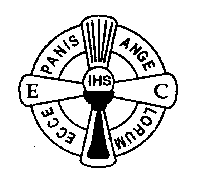Excerpts
From the Manual of the
Eucharistic Crusade of the Apostleship of Prayer
Published
in 1962 by the Central Office of the Eucharistic Crusade, Rome

Educating the Youth to Live the Mass
TEACHING CHILDREN TO PRAY:
2. STAGES IN THE TEACHING OF PRAYER.
Second Stage: (continued):
a) Prayer in their own words.
Prayer to God in their own words is necessary both to bring the children to a personal and sincere relationship with God, and to prepare them for mental prayer. The children must first be led to a personal awareness of God so that everything that they see, everything that brings them joy, they acknowledge as a gift from God for which they give Him thanks.
The principal facts of the story of our salvation and of the life of Christ must be told them in a way that will stir their emotions and warm their hearts. Much depends on this. Therefore not only should the story be lively and clear, but also attractive pictures ought to be shown to the children which at one and the same time clarify the story and ta1k to the heart. The feelings which might be stirred by the different stories should be expressed openly by the educator and the children together. The children might express their feelings towards God and Our Saviour in little acts of thanksgiving, praise, confidence, love. sorrow for sins, purpose of amendment, compassion for others. etc.. that they make up. Such emotions and resolutions can be expressed in short prayers which the children can say immediately and perhaps repeat during the day. The children should be taught to make up their own prayers whenever occasion offers, e.g. a prayer of thanks to God for some for which they receive during the day.
b) Use of definite formulas.
Although prayers with no fixed set of words are very important for the proper development of the practice of prayer among children, of themselves they are by no means sufficient. Over and above the fact that prayers said in common must have a set text, definite prayer formulas are needed to help our fallen nature, which easily grows weary of spiritual things. Far we must pray not only when we feel like it, but at all times.
Home | Contact
| Mass Centres | Schools
| Pilgrimages | Retreats
|
Precious Blood Residence
District Superior's
Ltrs | Superor General's
Ltrs | Various
Newsletter | Eucharistic
Crusade | Rosary Clarion | For
the Clergy | Coast to Coast |
Saints | Links